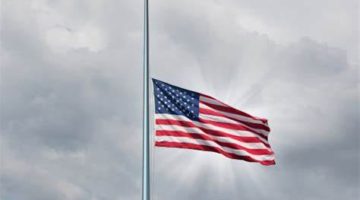When the Biden/Harris Administration announced its latest initiative to reduce the nation’s unsustainable trillion-dollar student debt, both borrowers and advocates rejoiced. In the coming weeks an estimated 804,000 student loan borrowers will together receive $39 billion in federal loan debt cancellations.
These unprecedented debt cancellations are available due to systemic corrections that will now ensure all borrowers receive full credit for qualifying payments under the Department’s Income Driven Repayment (IDR) plans.
More importantly, these developments signal one of the very few times that Black student loan borrowers stand to become the initiative’s biggest beneficiaries. Recent data analyses underscore the extra student debt borne by Black America.
To paraphrase President Biden’s reaction to national health being passed when he served as President Barack Obama’s vice president, “This is a big deal.”
According to the Education Data Initiative:
• Black college graduates owe an average of $52,000 in student loan debt;
• Over half of these borrowers say their net worth is less than their student debt;
• Black student loan borrowers are the most likely to struggle financially to make a $250 monthly payment; and
• Four years after graduation, Black loan borrowers owe an average of 188 percent more on their debt than whites.
Further, as of June 1, 2021 – long before this new initiative–only 157 borrowers received forgiveness from the Education Department, despite the fact that thousands more were also eligible, according to the federal Government Accountability Office (GOA). This office also found that about half of more than $1 trillion in outstanding federal student Direct Loans are being paid by borrowers using IDR plans.
Now, federal loan borrowers who have reached the equivalent of either 20 or 25 years of qualifying months will be benefit. Additionally, loan payments made prior to a loan consolidation will also be counted toward forgiveness.
“My Administration has worked hard to secure the largest increases to Pell Grants in a decade, fixed broken loan programs such as Public Service Loan Forgiveness and created a new incomedriven repayment plan that will cut undergraduate loan payments in half and bring monthly payments to zero for lowincome borrowers,” said President Joe Biden on announcing the action.
“By fixing past administrative failures, we are ensuring everyone gets the forgiveness they deserve, just as we have done for public servants, students who were cheated by their colleges, and borrowers with permanent disabilities, including veterans,” added Secretary of Education Miguel Cardona.
Borrowers receiving notifications in the coming days include those with Direct Loans or Federal Family Education Loans held by the Department (including Parent PLUS loans of either type) who have reached the necessary forgiveness threshold as a result of receiving credit toward IDR forgiveness for any of the following periods:
• Any month in which a borrower was in a repayment status, regardless of whether payments were partial or late, the type of loan, or the repayment plan;
• Any period in which a borrower spent 12 or more consecutive months in forbearance;
• Any month in forbearance for borrowers who spent 36 or more cumulative months in forbearance;
• Any month spent in deferment (except for in-school deferment) prior to 2013; and
• Any month spent in economic hardship or military deferments on or after January 1, 2013.
Discharges will begin 30 days after emails are sent. Then, borrowers will receive a second notice – from their loan servicer – after their debt is discharged.













No Comment